Fin Tube
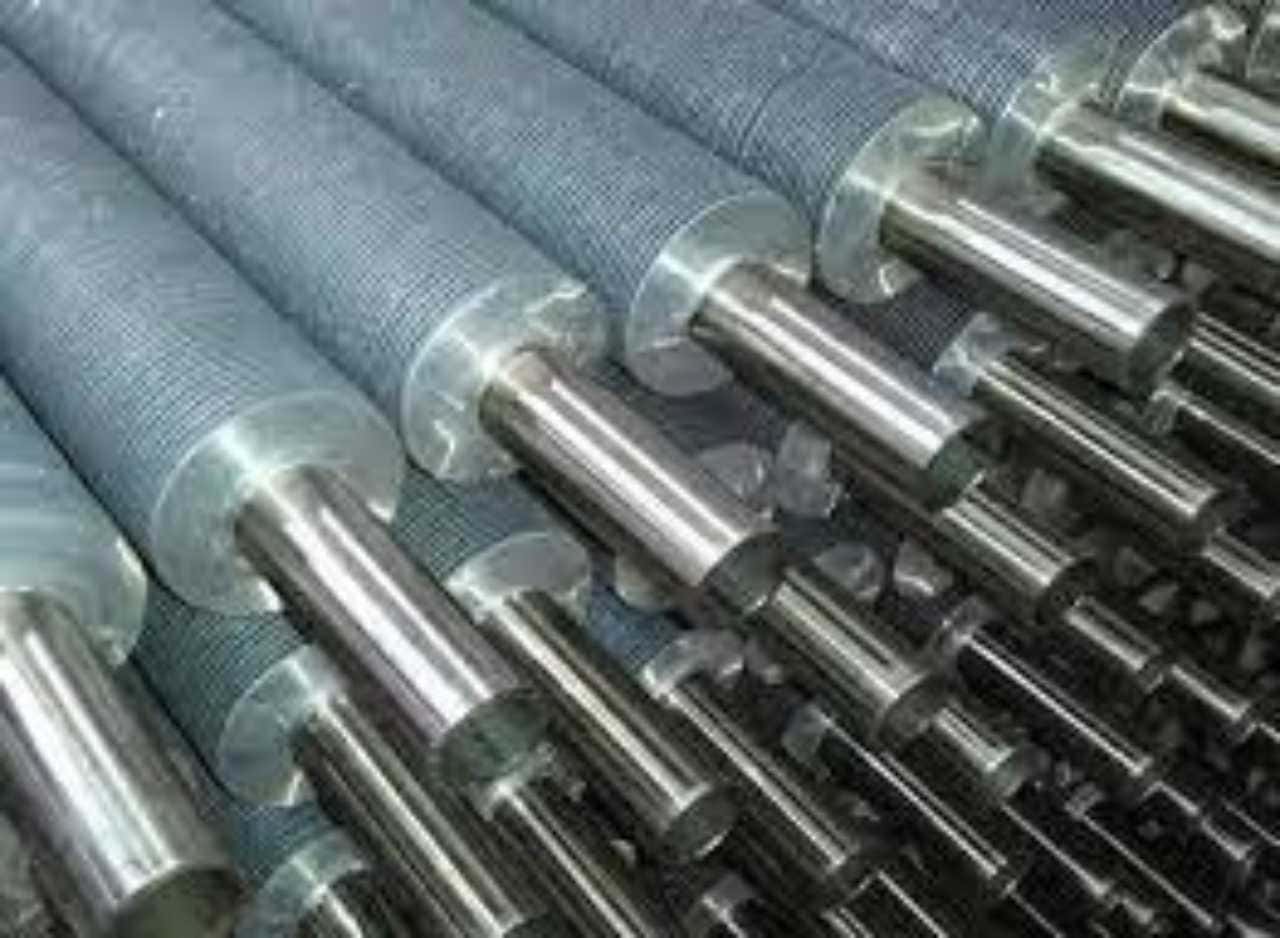
Fin Tube is classified to the Extended Surface Tube group for Heat Exchangers. Fin Tube is generally in the form of a tube with fins on the outside which function as an extension of the surface of the outside of the tube.
As part of the heat exchange equipment, the fin tube functions to transfer heat from one side to the other, from the inside tube to the outside tube or vice versa. The outer part of the tube or Fin is used for fluids that have a lower heat transfer coefficient than the fluid inside the tube. Such as air, flue gas or other gases. The inside of the tube can be liquid, pressurized gas or saturated steam or other gas. Fin and Tube materials are depend on the fluid used, the temperature and pressure of the fluid.
Several Types of Fin Tube
Although there are many other types of extend surfaces, we refer here to heat transfer surfaces composed by round tubes and the fins. The choice of each one depends on the application. In the sequence, the most common types and their typical applications
L Fin Tube (wound on L footed fin)
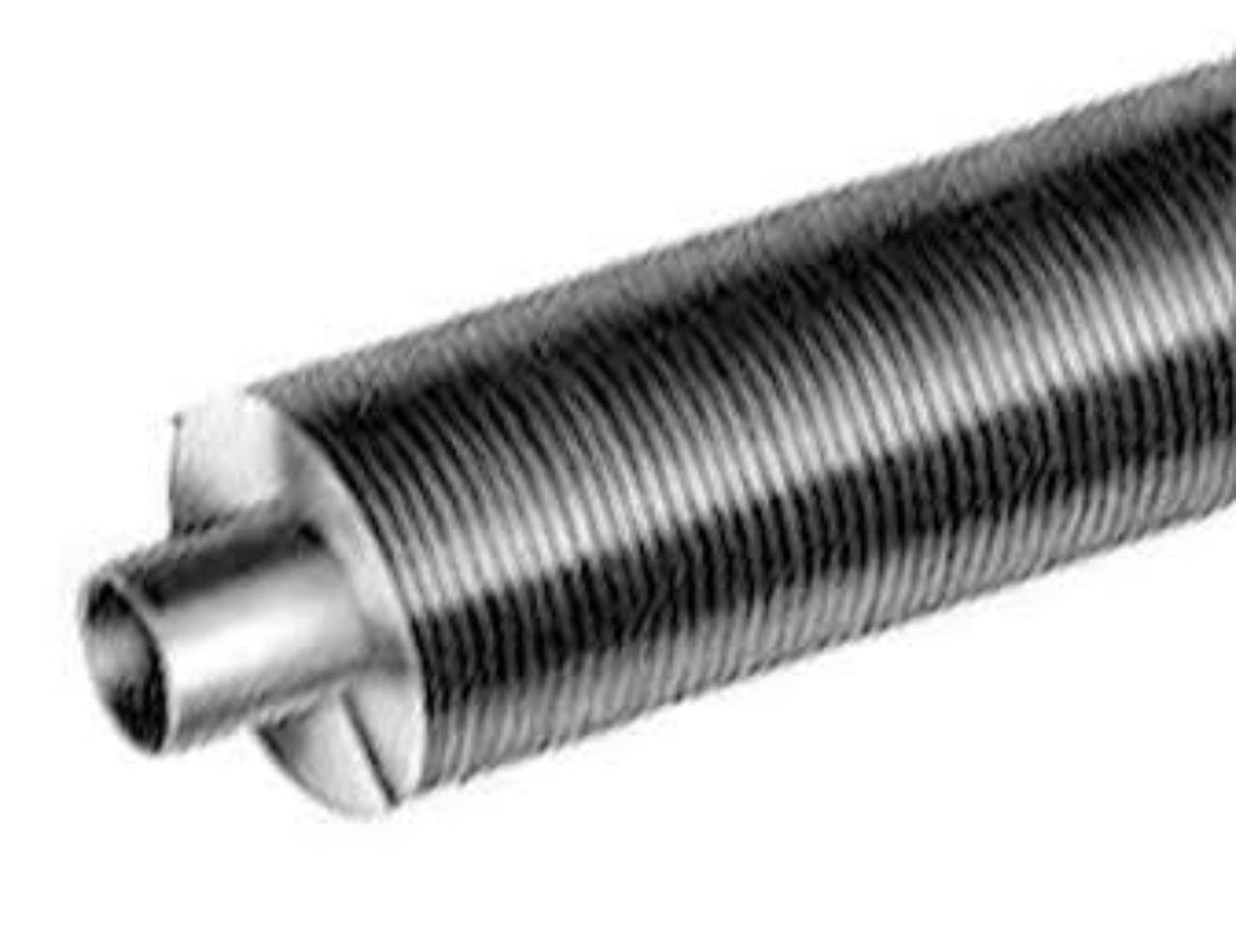
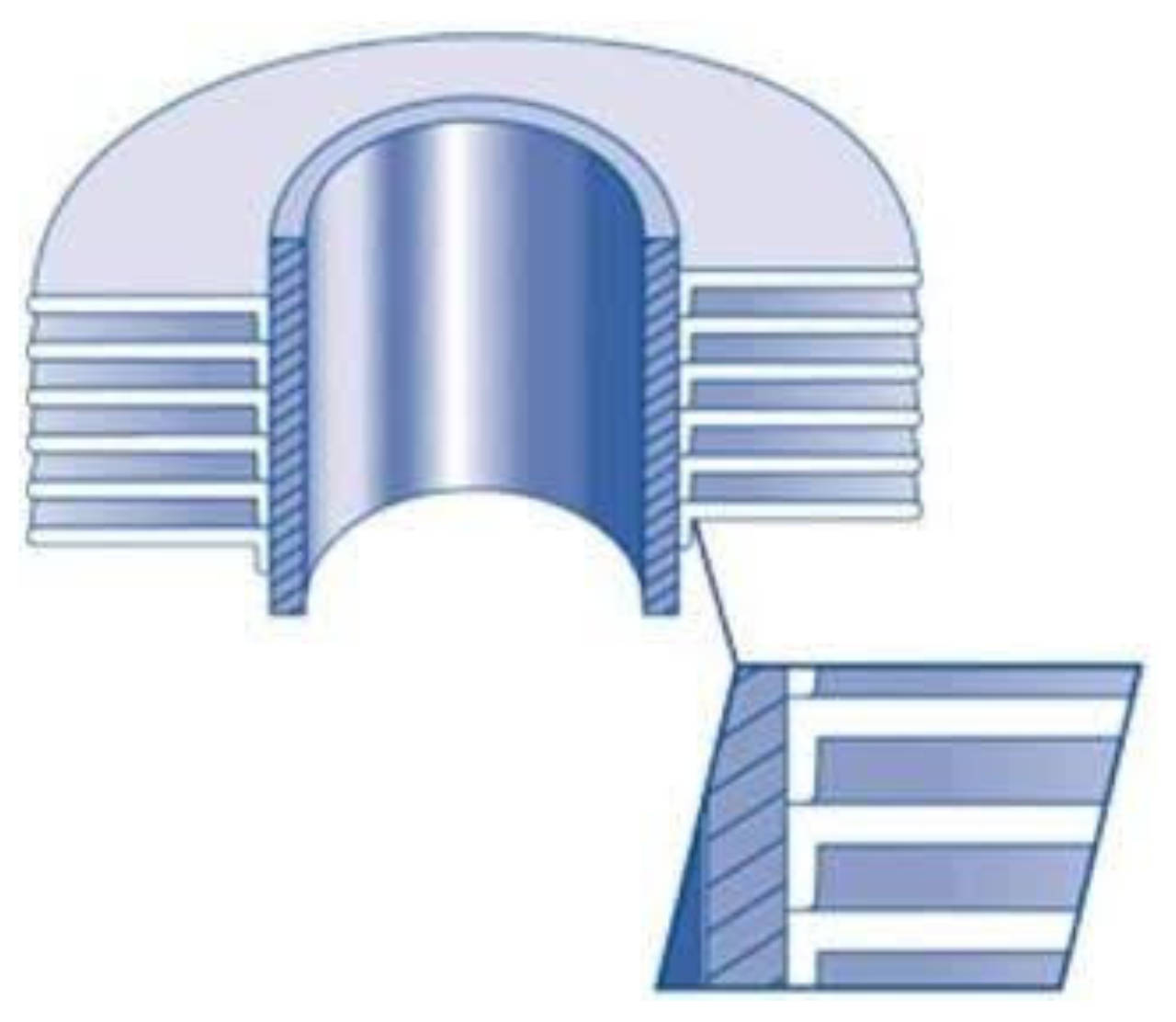
Wound-on “L-footed” fin ( L-fin tube )
This is the most basic type. A strip is wounded on the tube like a helix in a “L” shape.In the basic construction, the contact between tube and fin is achieved by the tension applied during manufacture.
Loss of pressure contact due to thermal dilatation must be taking into account when selecting this tube type.
A strip is bended in an “L” shape before wounded over the tube.
Here applies the same comment above regarding to temperature limitation to avoid loss of contact pressure between tube and fin. Due to this fact, this type of finned tube is used only at moderate temperatures.
In general, for this type, fins of copper or aluminum are used due to the facility of bending these materials.
The “L” shape of the fin has the effect of increasing the contact area between tube and fin and, in some extent, protects the bare tube against corrosion by covering partially its surface
Max Temp. Operation : 130°C
LL Fin tube
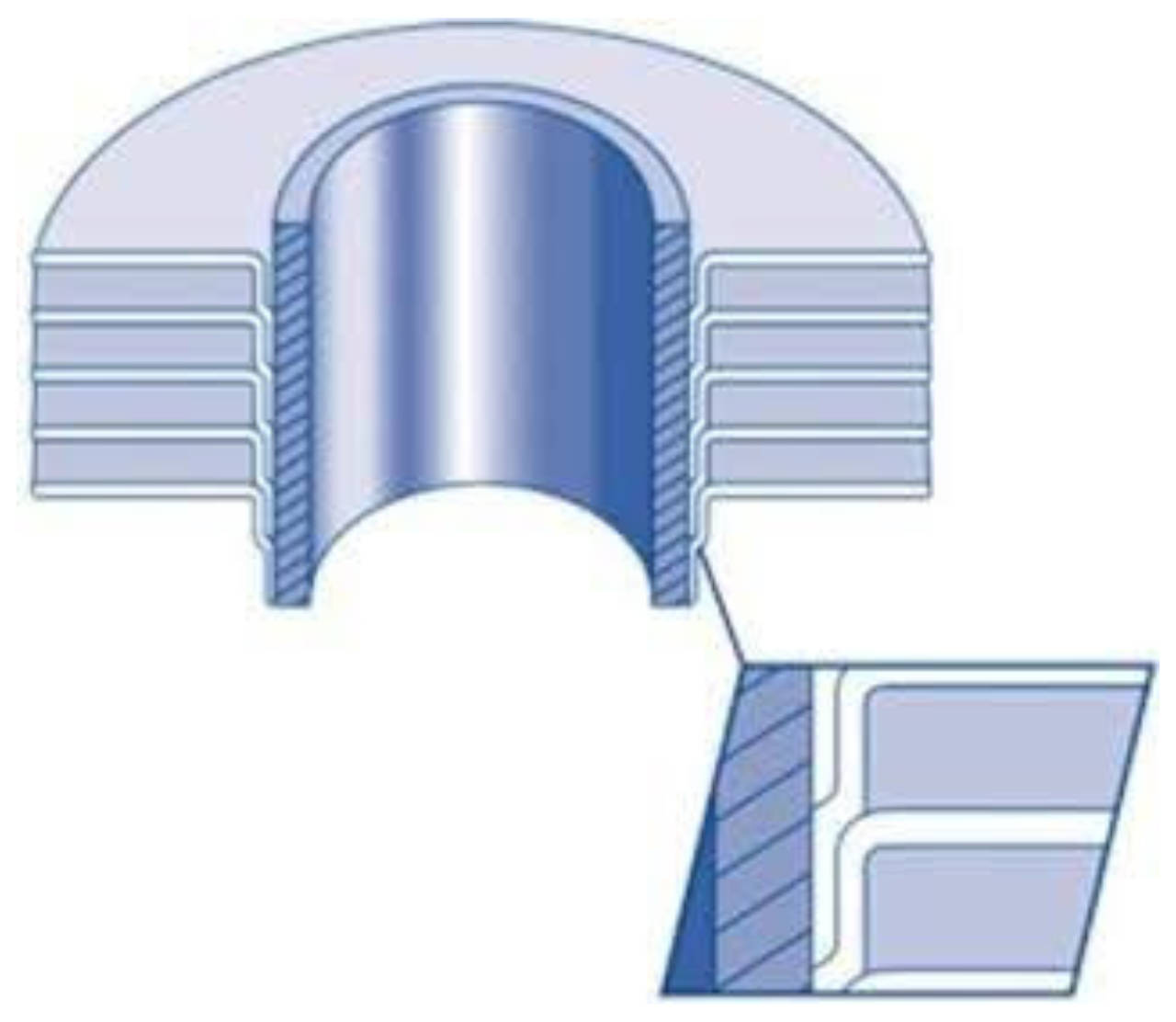
LL Fin tube Same as L fin except the fin foot is overlapped giving more corrosion protection. Also named Over Lapped fin tube. The fin is helically wound around the base tube forming a strong mechanical contact between the tube and fin, thus improving the heat transfer efficiency.This type of finned tube is often used as an alternative to the more expensive extruded type fin in corrosive environments.
Max Temp. Operation : 165°C
KL Fin Tube

KL fin tube same as L fin tube , except that the base tube is knurled before application of the fin foot.Also named Wrap On Knurled type fin tube.After application,the fin foot is knurled into the corresponding knurling on the base tube thereby enhancing the bond between fin and tube,Resulting in improved heat transfer efficiency.
Max Temp. Operation : 250 °C
G Fin Tube / Embedded or Grooved Fin

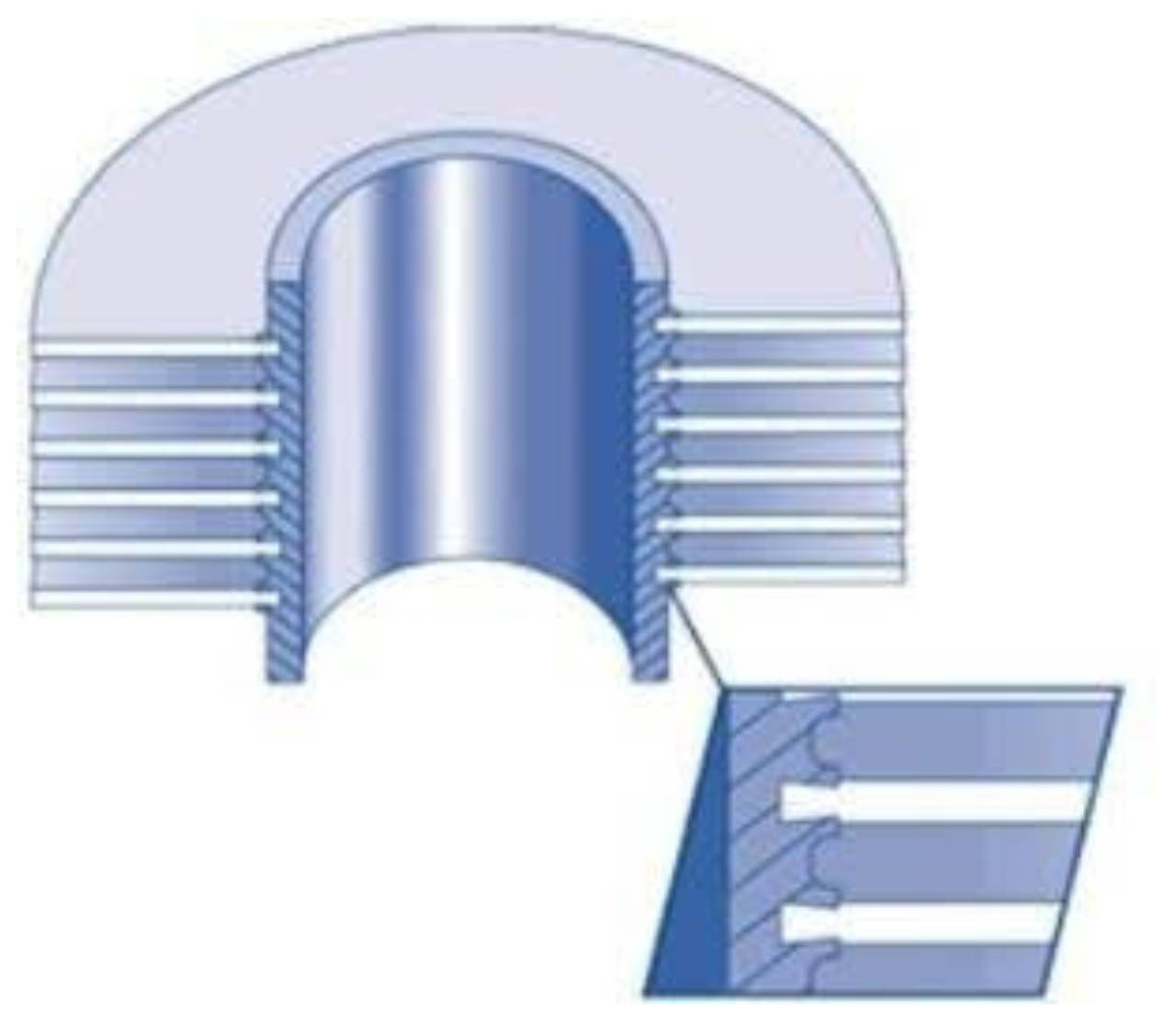
In the process of manufacture, a groove is opened on the perimeter of the tube, without removing material. The fin is fitted into this groove and then a device push the revolved tube material against the fin such that the fin remains blocked into the groove. This blockage provides permanent contact between tube and fin even at high temperatures. This type is widely used for steam air heaters and air cooled heat exchangers (process fluids cooled by ambient air). The most common combination of materials is carbon steel for tubes and aluminum for fins.
Max Temp. Operation : 380 °C
Extruded Fin Tube

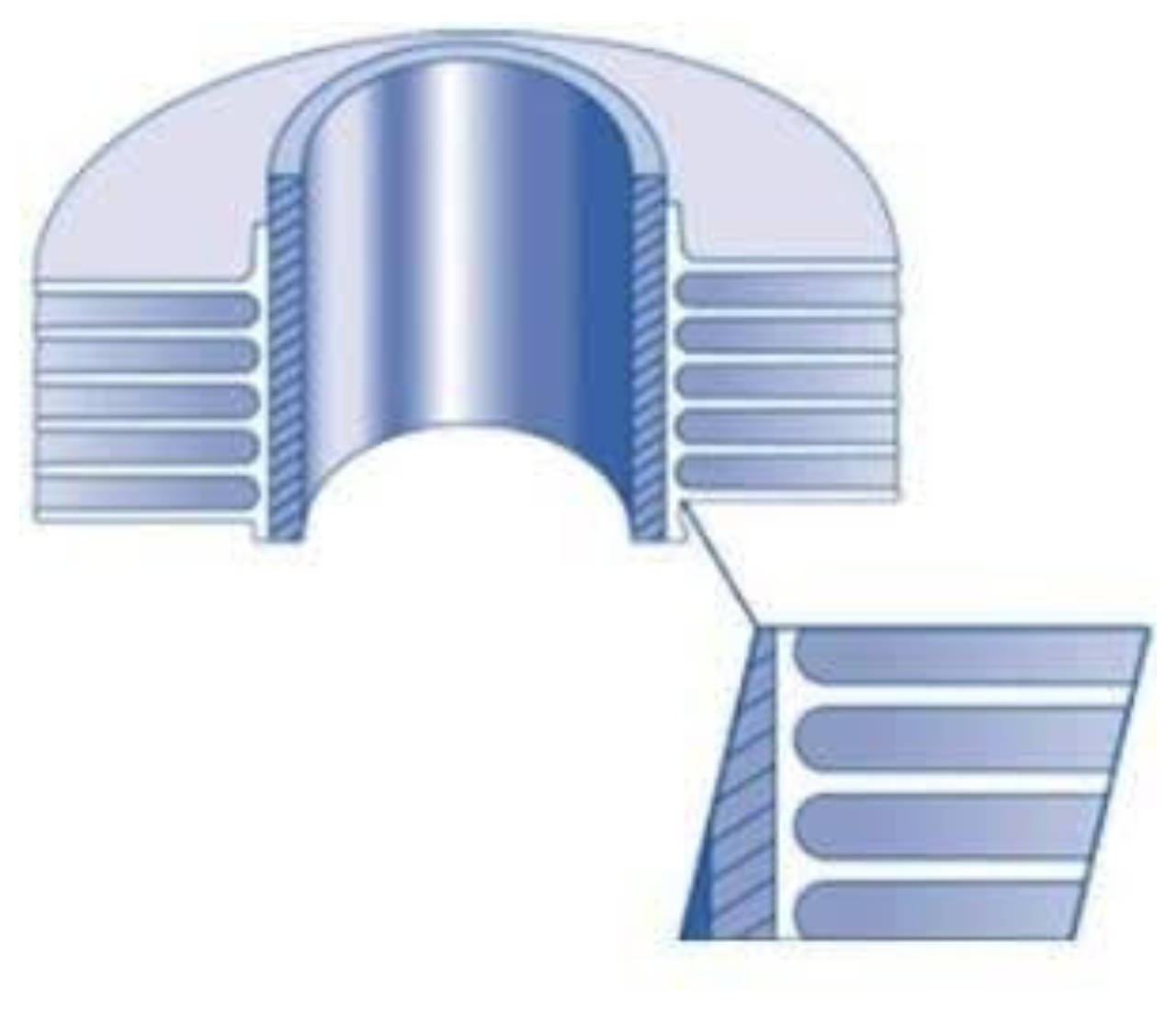
A bare tube, usually of carbon steel (but may be stainless steel or copper alloys) is jacketed by an aluminium tube. The fins are raised by extrusion from this outer tube of aluminium. During the extrusion process, a tight bond is achieved between the extruded aluminium tube and the bare tube. This tight bond and the the fact that the fins are not a second piece like all the types above make this finned tube to perform almost as well as G-Fin at high temperatures. Beyond this, the protection of the bare tube by the outer aluminium tube makes this type excellent for corrosive environment in air cooled exchanger application.
Max Temp. Operation : 285 °C
Plate Fin , Plate Fin Coil


Plate fin Coil Different from the helical fin, the fin is a continuous sheet that involves several tubes at once. The fin holes through which the tubes pass have a collar that increases the contact area between tube and fin. A good contact pressure is achieved by expanding the tubes against the fins.Tubes must be of soft material to allow for this expansion. Common materials are copper or copper alloys for tubes and aluminium or copper for fins. The advantage of this type of finned tube is the compactness of the exchangers, what means large amount of area per volume of the exchanger, and low vibration, since the tubes are firmly kept in place by the fins that acts as tube supporters.
Another Type of Fin Tube that uses Fin material from Steel / Alloy Steel and Stainless
 |
 |
 |
 |
| Serrated Fin Tube | Solid fin tube ( HFW Fin Tube ) | Laser weld Fin Tube | Crimped Fin Tube |
| High Frequency Welded Fin Tube | |||
 |
 |
 |
 |
| Elliptical Fin tube | H Fin tube | Longitudinal Fin Tube | Stud Fin Tube |
Fin Tube Coil & Plate Fin Coil
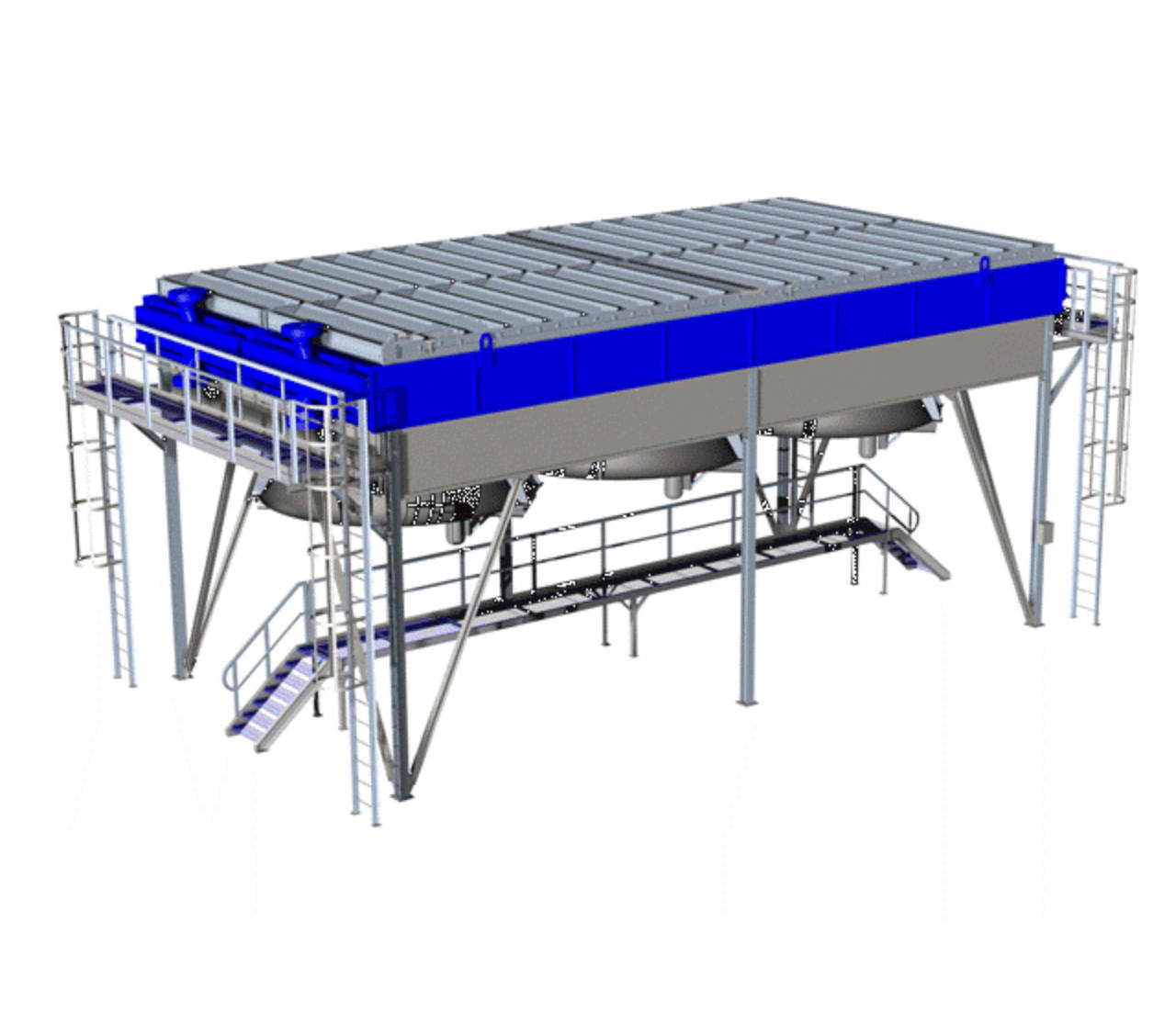
Fin Fan Cooler
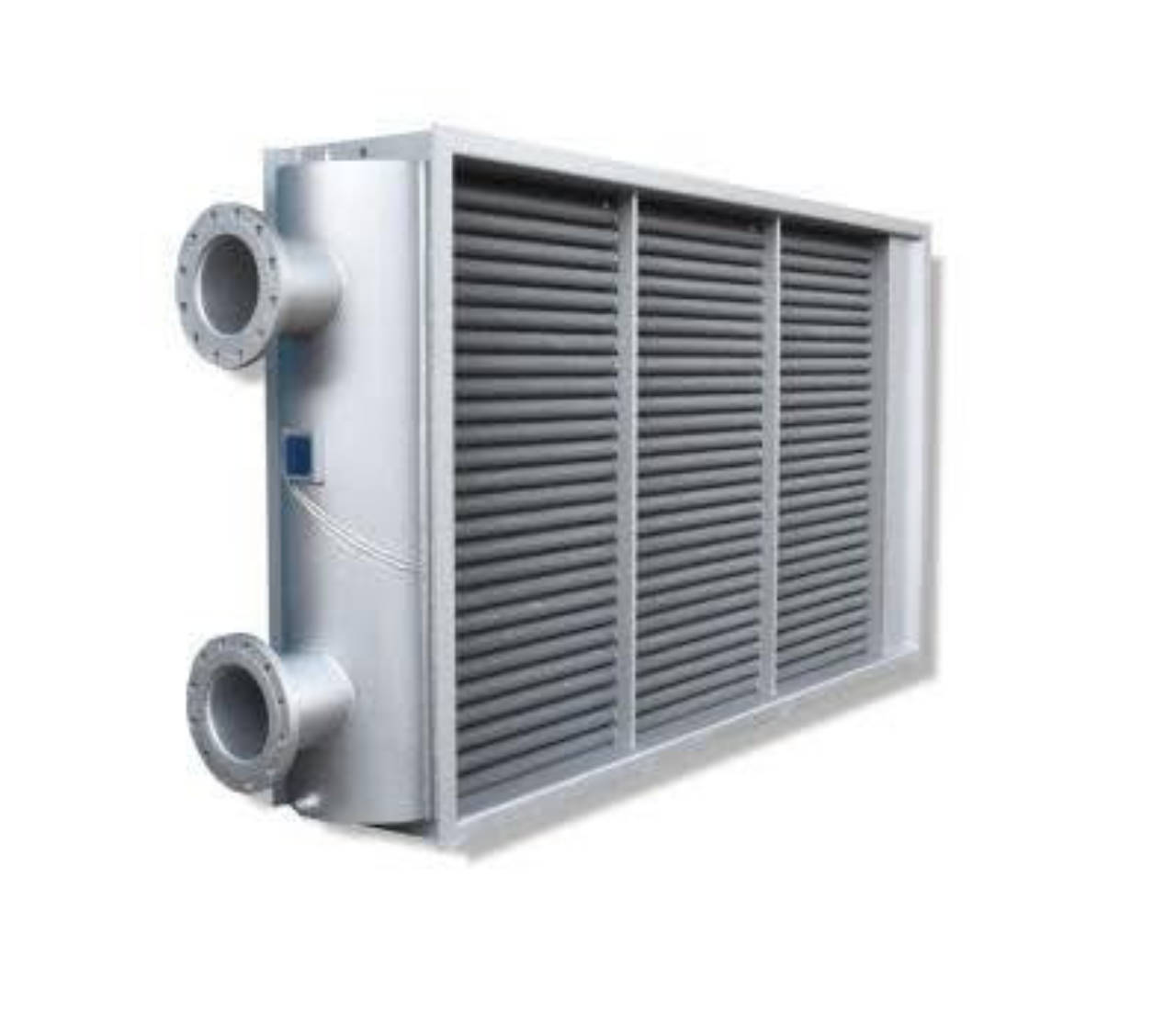
Fin Tube Air Heater / Cooler
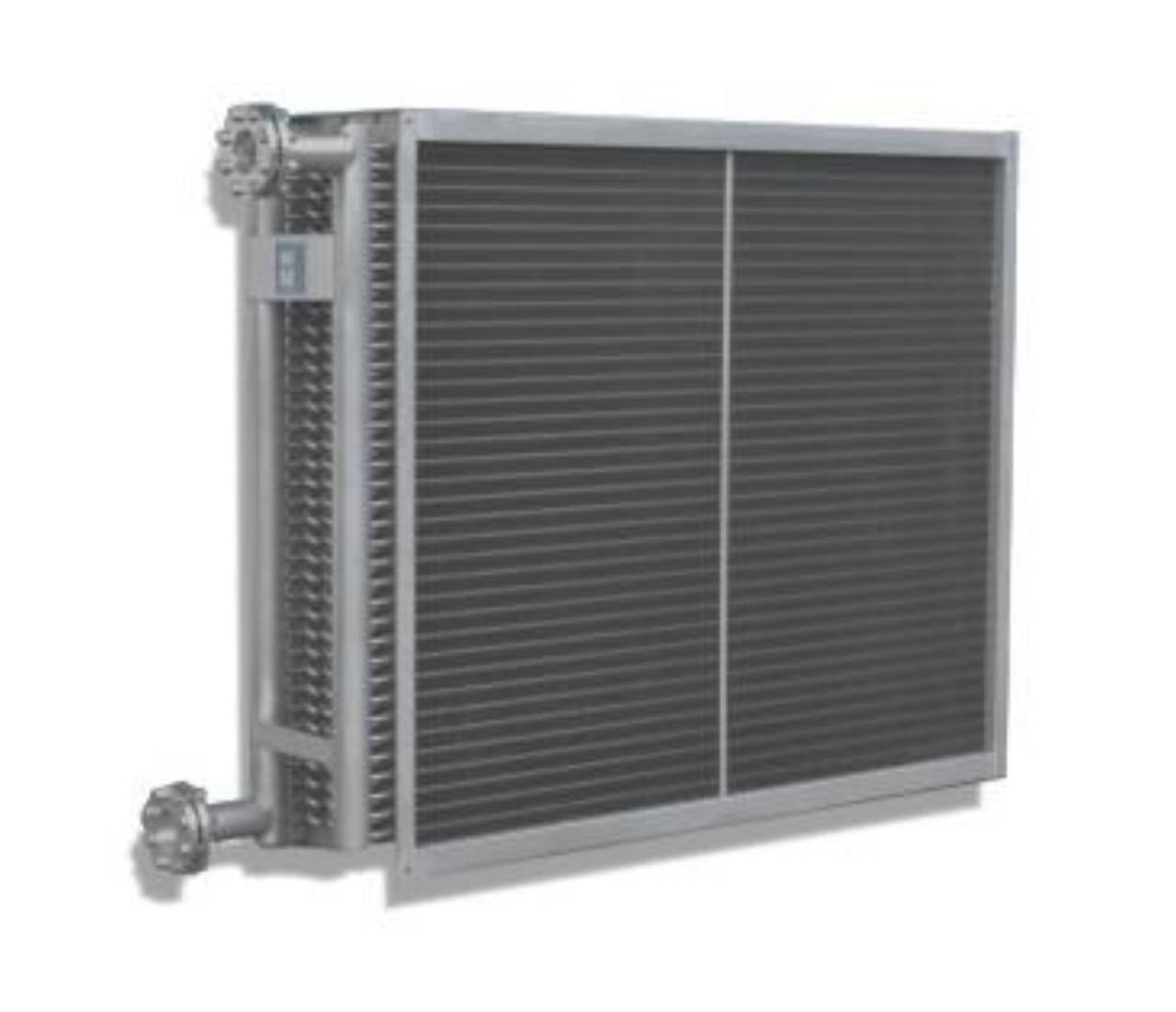
Plate Fin Coil
Applications for using Fin Tube Coil :
Fin tube heat exchangers are widely used throughout industry in a variety of applications. This type is used when one fluid flow is at a higher pressure and/or has a higher heat transfer coefficient compared to the other fluid flow.
For example, in a gas-liquid heat exchanger, the heat transfer coefficient on the liquid side is generally very high compared to the gas side. Fins are used on the gas side to increase the surface area.
Within the fin tube type, round and rectangular tubes are most commonly used (although elliptical tubes are also used), and fins are used either on the outside or inside, or on both sides of the tube, depending on the application.
-
- For Cooling and Heating Process
- Condensor
- Evaporator
- Heat recovery
Fin Tube Surface Design Considerations
Qualitative considerations specific to tube fin surfaces include:
-
- Tube-fin exchangers usually have lower compactness than plate-fin units.
- Tube-fins can be designed for a wide range of tube fluid operating pressures, with other fluids being at lower pressures.
- Reasonable fouling can be tolerated on the tube sides if the tube can be cleaned.
Materials Used:
Fin and Tube materials are adjusted to the fluid used, the temperature and pressure of the fluid.
-
- Corrosive fluid
- Low Temperature Fluid
- High Temperature Fluid
Tube materials commonly used are :
Carbon Steel ; Carbon Steel Alloy ; Stainless Steel ; Titanium ; Copper ; Copper Alloy
Fin Material
Carbon Steel ; Carbon Steel Alloy ; Stainless Steel ; Copper ; Copper Alloy
Solid fin tubes sizes
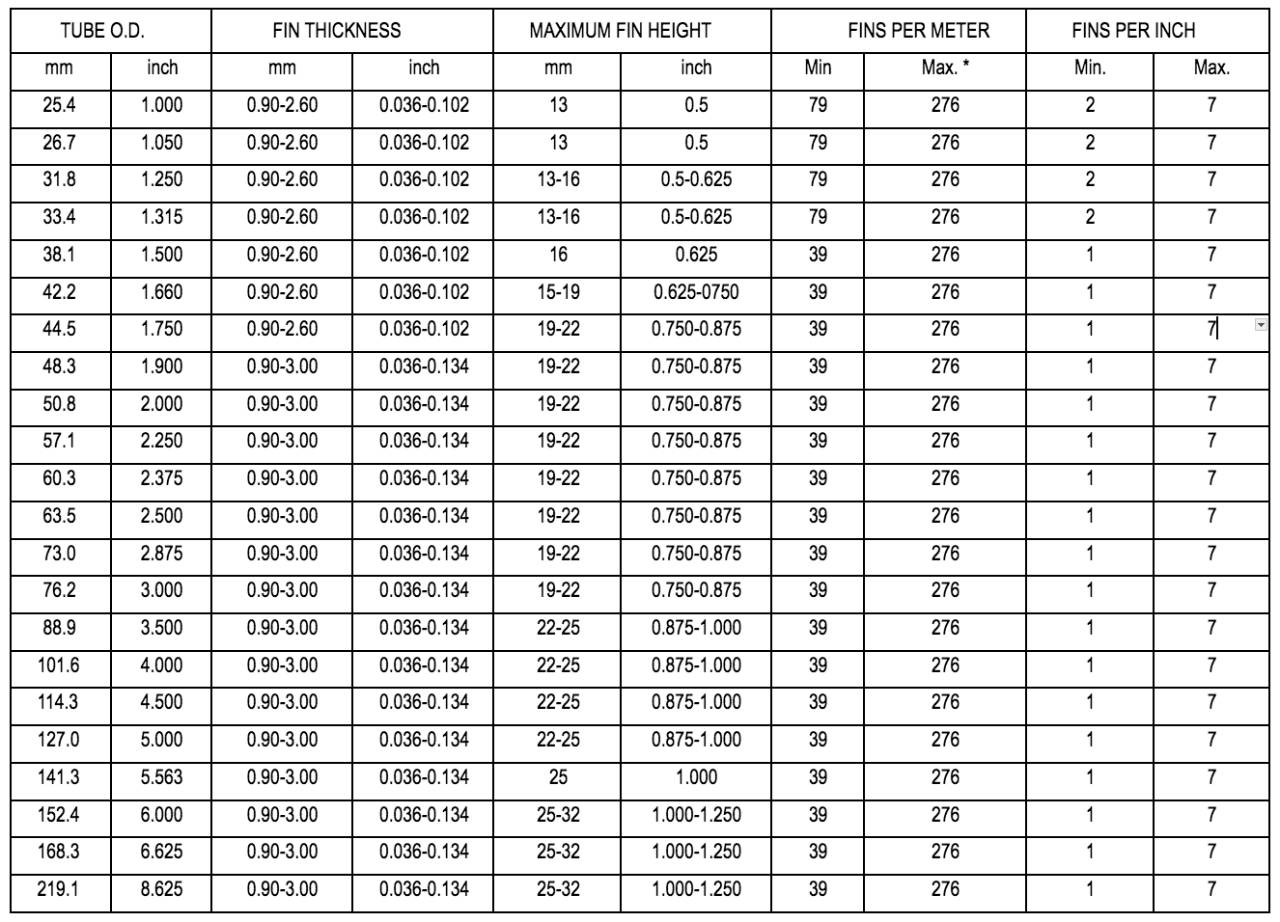
Serrated fin tube sizes

Steel studded tube sizes

* Max n° of fins per Meter can be used for fin thicknesses :S 1.5mm, for heavier fin wall thickness / Max n° of fins per meter will be advised on request.
** This technical data is indicative of our Standard manufacturing range. On request, we are able to consider other combinations and tube dimensions that your project may require.
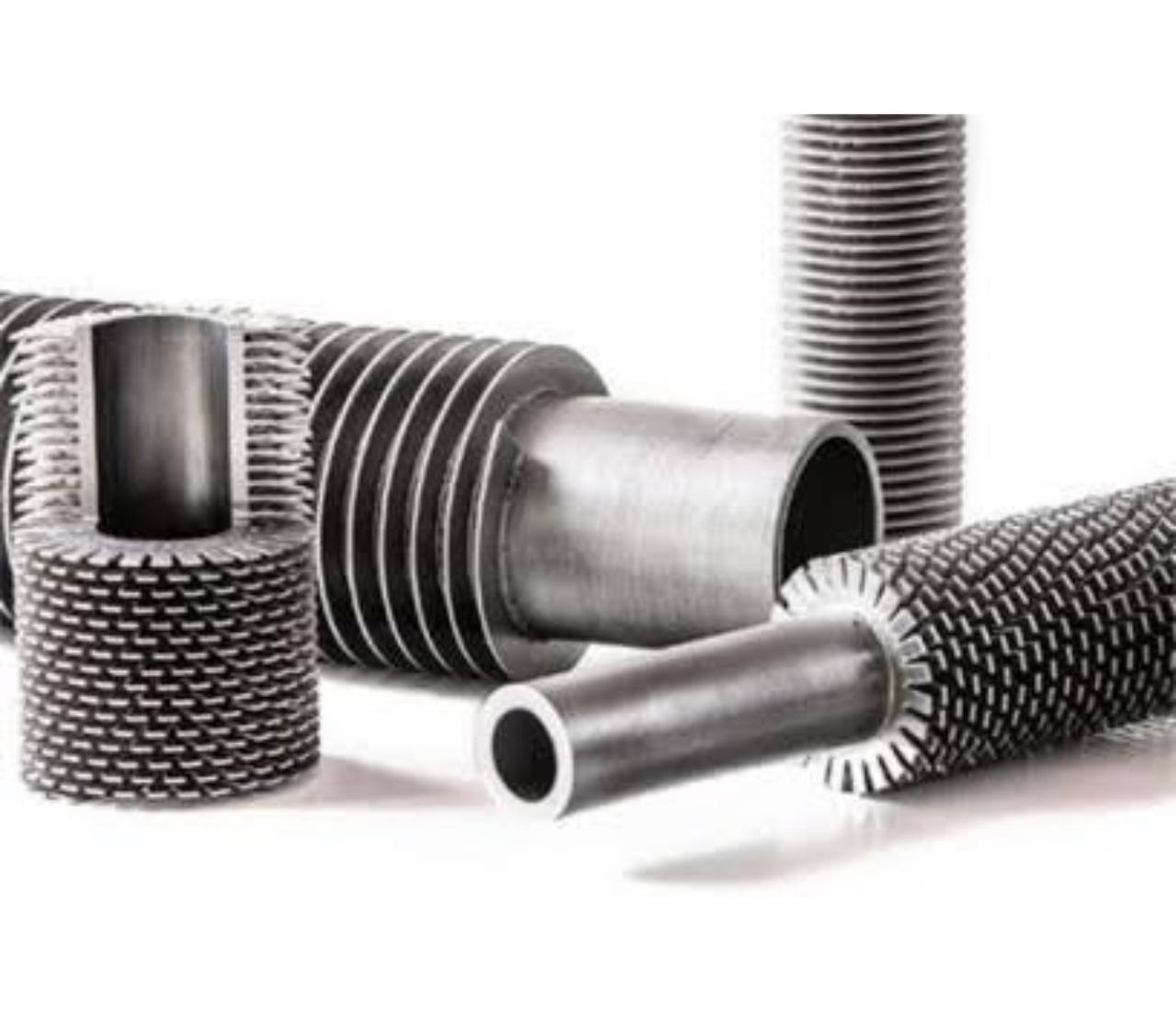


| Phone : +62 21 856 1234 (Hunting) Mobile : 0811 1999 9288 |
PT. Metalindo Prima EngineeringJl. KH Zainal Mustafa No. 17 Email : info@metalindoengineering.co.id |

